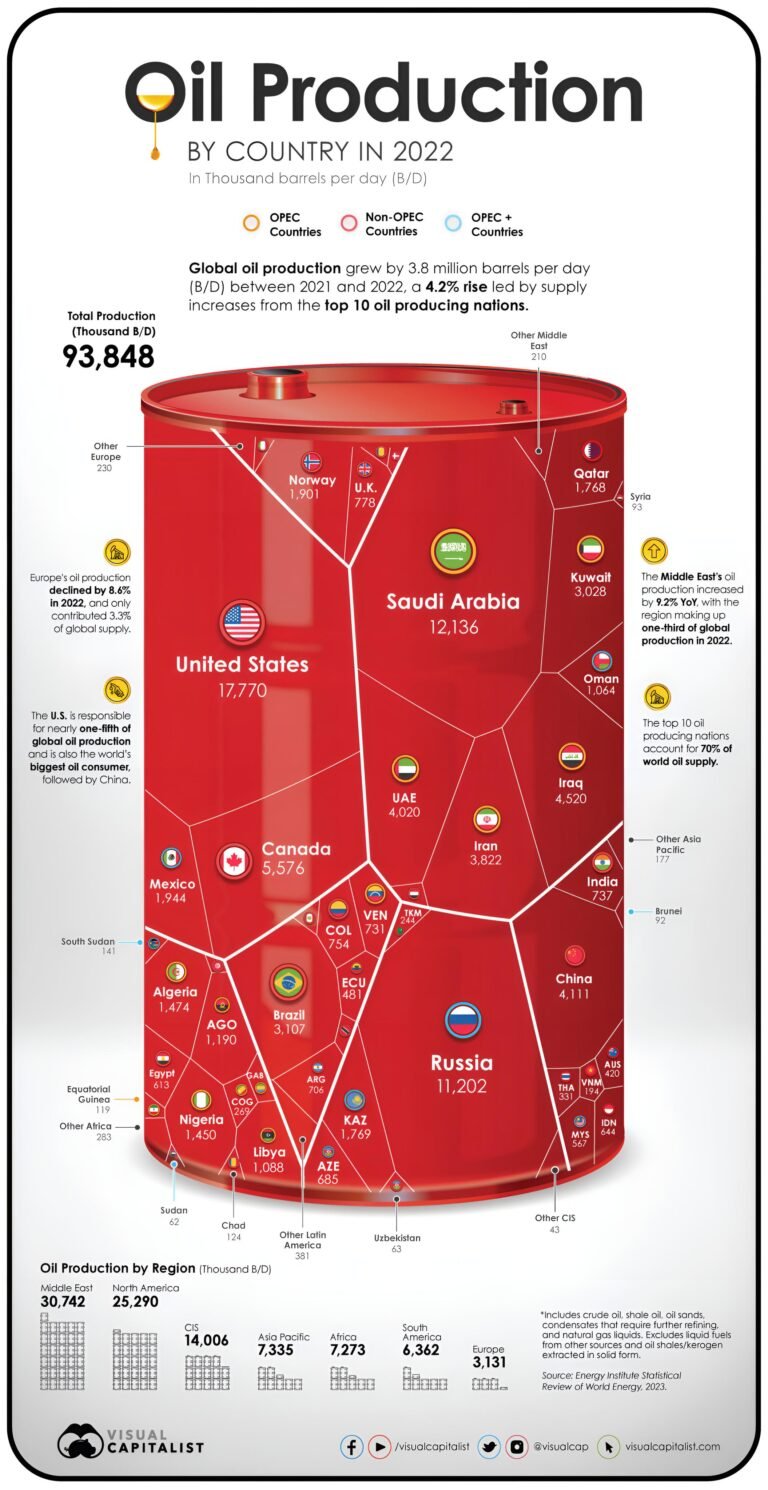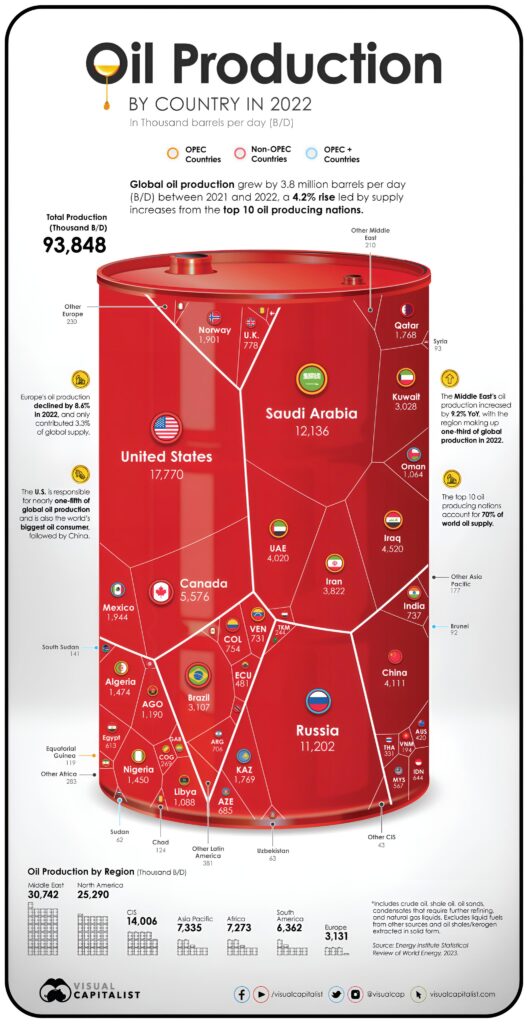
In 2022, the global oil industry witnessed significant shifts and challenges. Oil prices soared, reaching over $100 per barrel, and major oil-producing countries experienced substantial economic growth. Let’s check this visualisation.
The United States has maintained its position as the world’s largest oil producer since 2018. In 2022, it continued its reign by churning out close to 18 million barrels per day (B/D), contributing to almost one-fifth of the world’s oil supply.
Notably, approximately three-fourths of the U.S.’s oil production is concentrated in five states: Texas, New Mexico, North Dakota, Alaska, and Colorado.

Saudi Arabia ranked second in oil production, and delivered 12 million B/D in 2022, accounting for roughly 13% of the global supply. The nation remains a key player, along with the United States and Russia, in shaping the world’s oil market.
Russia secured the third position with an oil production of 11 million B/D in 2022. Together with the top two producers, Russia, along with Canada and Iraq, collectively contribute to over half of the world’s oil supply.
The top 10 oil producers, including China, UAE, Iran, Brazil, and Kuwait, are collectively responsible for more than 70% of global oil production. Interestingly, all these giants increased their production between 2021 and 2022, resulting in a 4.2% year-on-year rise in global oil output.
The Middle East plays a pivotal role in global oil production, contributing to one-third of the world’s supply. North America, on the other hand, accounts for almost another one-third of the production.
The Commonwealth of Independent States (CIS), a consortium of post-Soviet Union countries, makes a significant regional contribution, representing 15% of global production.
A notable trend is Europe’s diminishing share of oil production, which has now dwindled to a mere 3% of the world’s supply. Over the last two decades, the European Union’s oil output has plummeted by over 50%. This decline is attributed to factors like stringent environmental regulations and a shift towards natural gas.
OPEC member countries, controlling approximately 35% of global oil output and holding about 70% of the world’s oil reserves, wield substantial influence in the oil market.
When factoring in OPEC+—a group of 10 oil-exporting nations with ties to OPEC—the share of oil production rises to over half of the world’s supply.

Oil remains a crucial component of the modern global economy. Countries that control substantial oil production enjoy significant political and economic advantages. Entire regions have prospered, and conflicts have arisen due to the quest for control over this valuable resource.
A Transition to Renewable Energy
The ongoing shift towards renewable energy sources is prompting major oil-exporting countries to diversify their economies.
Saudi Arabia, for instance, has invested in companies like Uber and WeWork through its sovereign wealth fund. However, despite the global push for renewable energy, oil continues to meet nearly one-third of the world’s energy demand.
The world’s oil production landscape is ever-evolving. The United States, Saudi Arabia, and Russia remain dominant players, while the industry grapples with changing dynamics and the urgent need for sustainable energy solutions.
As we navigate this transition, understanding the key players and their strategies is essential for comprehending the global energy landscape.